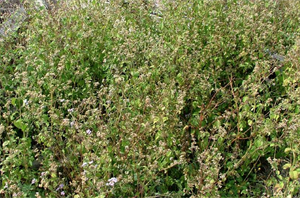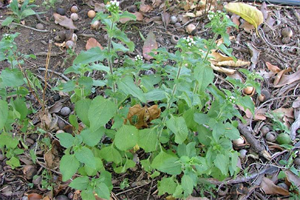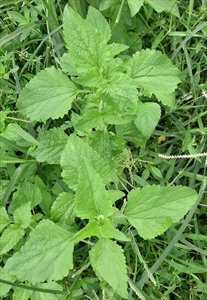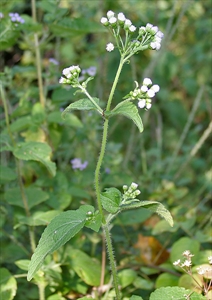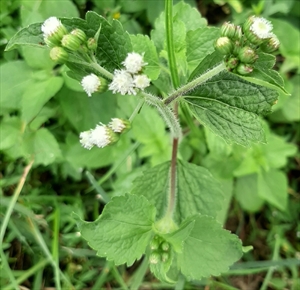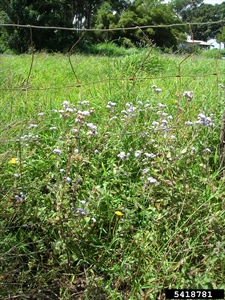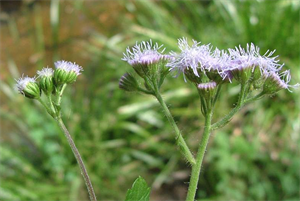- Widespread. Asia, Africa, North, South and Central America, Caribbean, Europe (restricted), Oceania. In most Pacific islands.
- Invasive annual of natural habitats: grasslands, forests, wetlands, banks of water courses, coastal dunes, as well as pastures, plantations, orchards, wastelands and roadsides, forming extensive swathes of the weed, especially in moist, fertile, disturbed soils. Impacts biodiversity, poisonous to humans, and a host of plant pathogens.
- Erect, branching, 0.5-1 m high. Stems, hairy, soft, becoming woody with age. Leaves, oval, broader at base, up to 7.5 cm long, smell of male goat when crushed. Flowerheads, in branches, flat-topped clusters at top of the stems. Each with 30-50 white, light blue or violet flowers. Fruits, small, brown and 1-seeded. Plants have shallow fibrous roots
- Spread: contaminant of seeds of other species; on clothes, machinery and vehicles; trade in medicinal plants and ornamentals.
- Biosecurity: seed is available on the internet.
- Biocontrol: Little known.
- Cultural control: hand weed or plough and disc (before plants set seeds); flood fallow (if practical); vehicle hygiene.
- Chemical control: in Australia (and Fiji): glyphosate. In Fiji, also 2,4-D.
